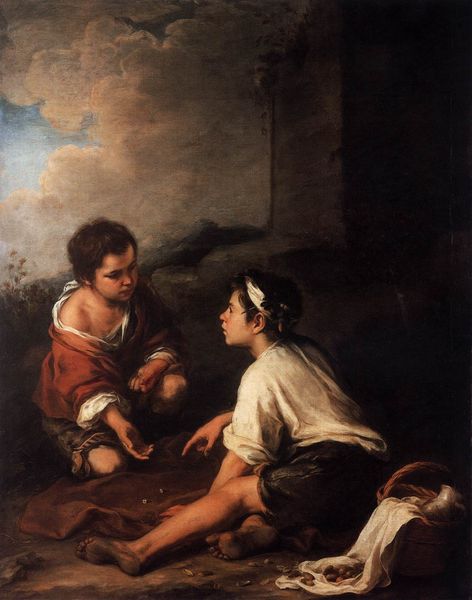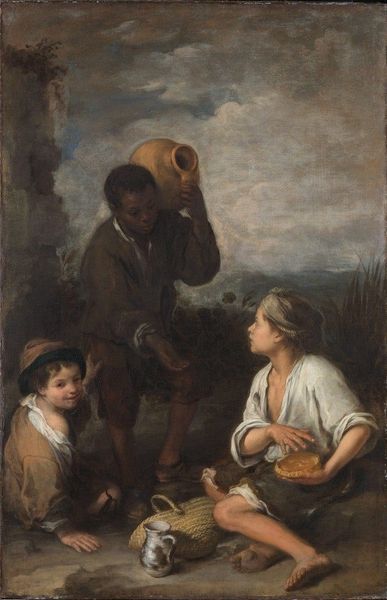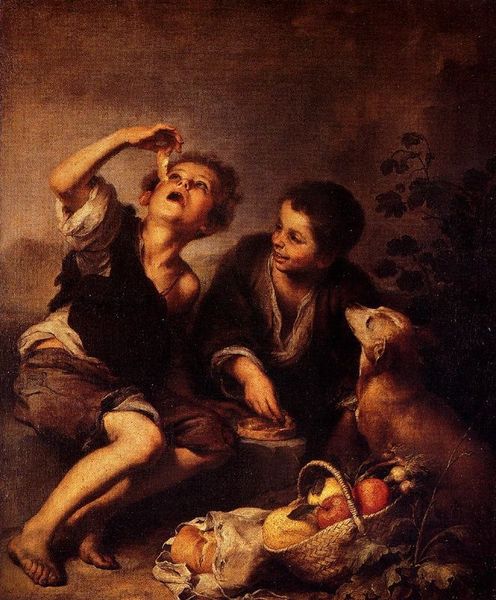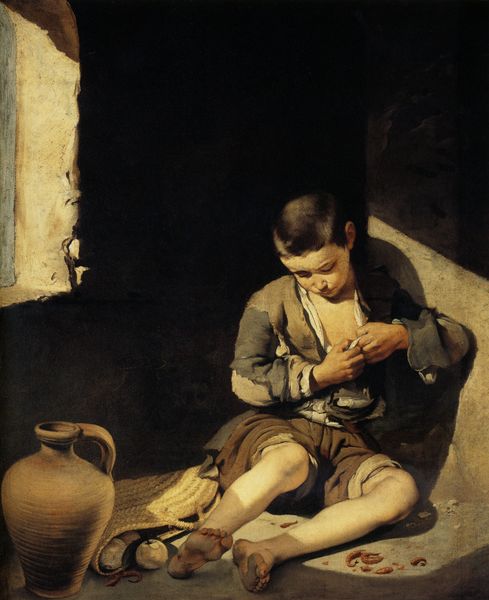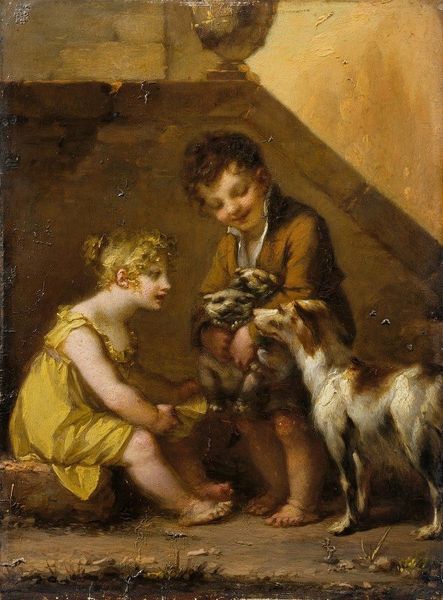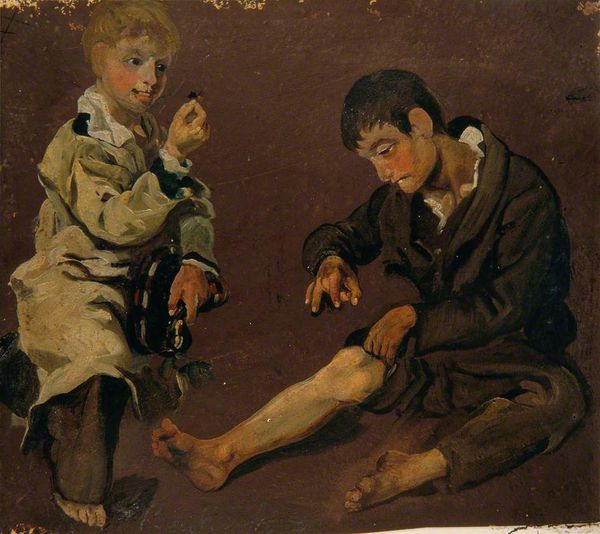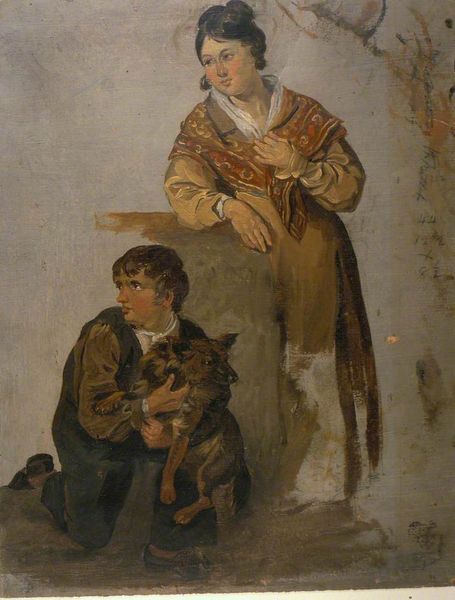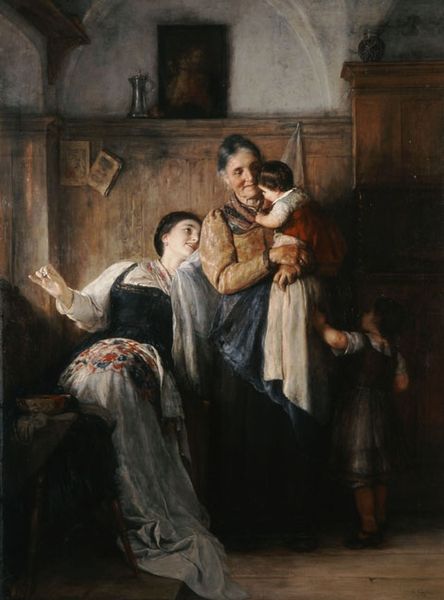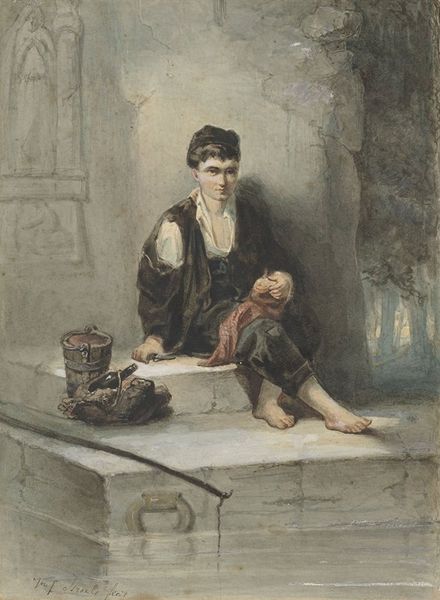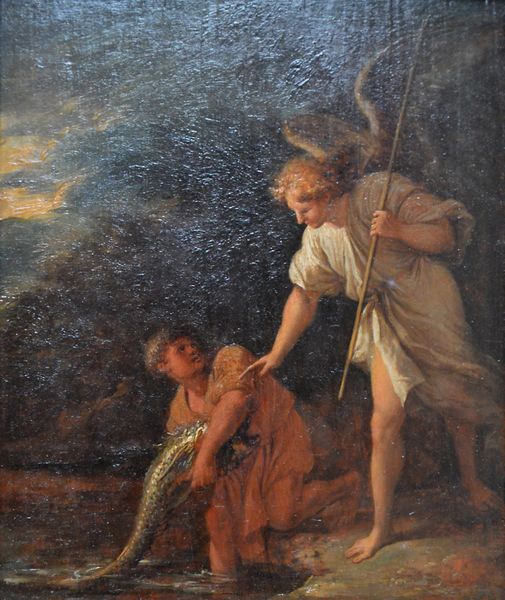
painting, oil-paint
#
portrait
#
figurative
#
baroque
#
painting
#
oil-paint
#
figuration
#
oil painting
#
genre-painting
Copyright: Public Domain: Artvee
Editor: Here we have "Two Peasant Boys," an oil painting that is attributed to Bartolomé Esteban Murillo. There's a sweetness in the way these two figures are portrayed, despite their apparent poverty. What's your take on it? Curator: Murillo often depicted scenes of everyday life, elevating the common person, particularly children, in his paintings. Consider the context. Seventeenth-century Spain was deeply stratified. How did Murillo's choice to focus on the lives of the poor challenge the norms and expectations of his aristocratic patrons, and of art's role in society? Editor: It seems almost revolutionary for the time, but were these images primarily for wealthy collectors? It feels a bit like romanticizing poverty. Curator: That’s a key tension. Murillo’s work catered to the sensibilities of the wealthy, offering a glimpse into a world they were largely detached from. The "picturesque" poverty he depicts, bathed in soft light and gentle emotion, risks obscuring the harsher realities of the time. He offers a form of "charitable looking," as some scholars put it, reassuring his audience of their own benevolent status. How do you think it achieved so much popularity given this critique? Editor: I guess that makes sense, but it is complicated. Maybe it provided a controlled, safe way for the elite to engage with the idea of poverty without actually confronting its ugliness? Curator: Exactly. His popularity underscores the complex relationship between art, patronage, and social consciousness. Murillo offers not so much a revolution but a careful negotiation within the existing social order. Editor: That sheds a whole new light on the painting for me, really thinking about who was viewing this, and how it reinforced their own positions of power. It goes deeper than just pretty faces!
Comments
No comments
Be the first to comment and join the conversation on the ultimate creative platform.
